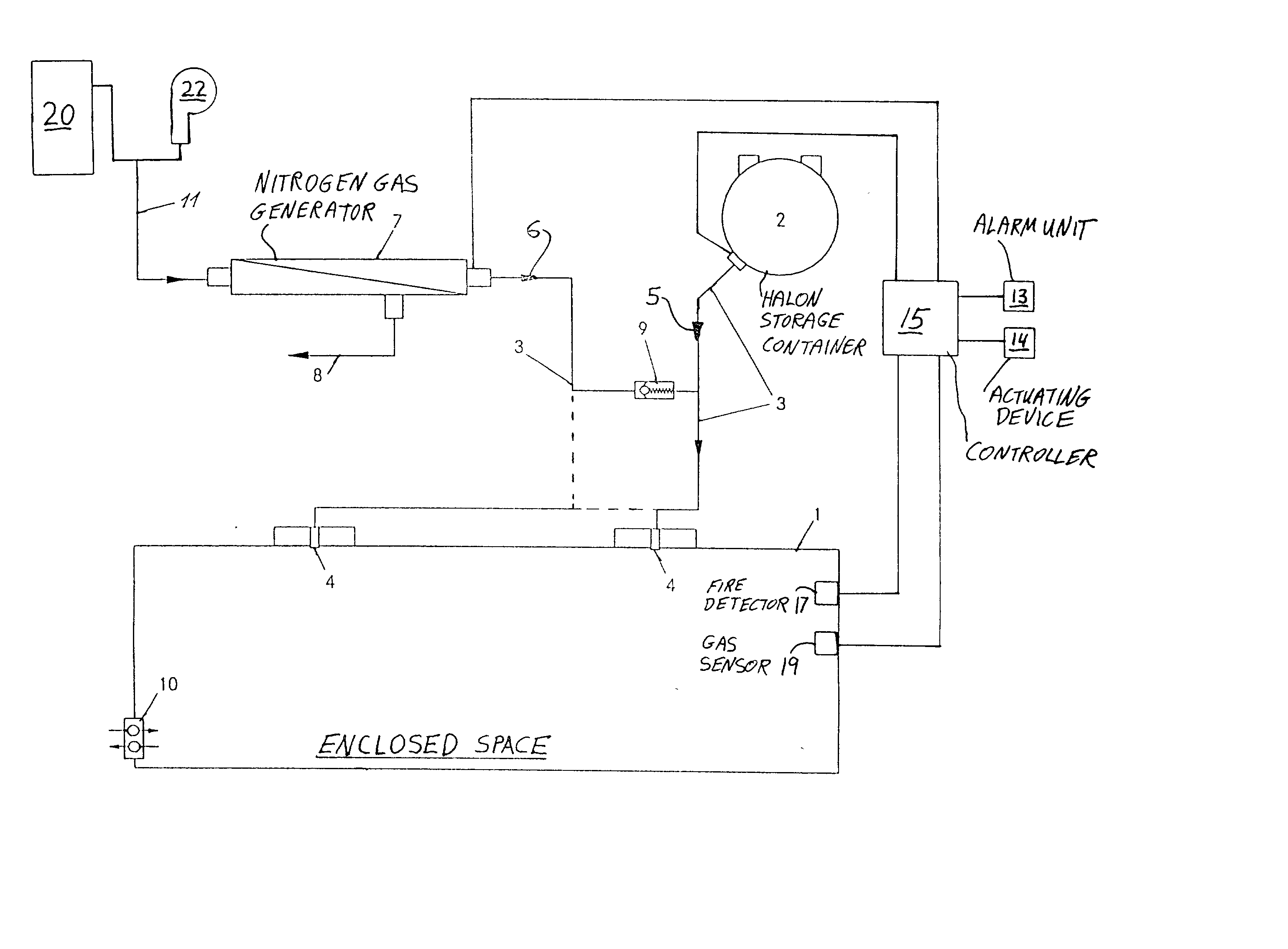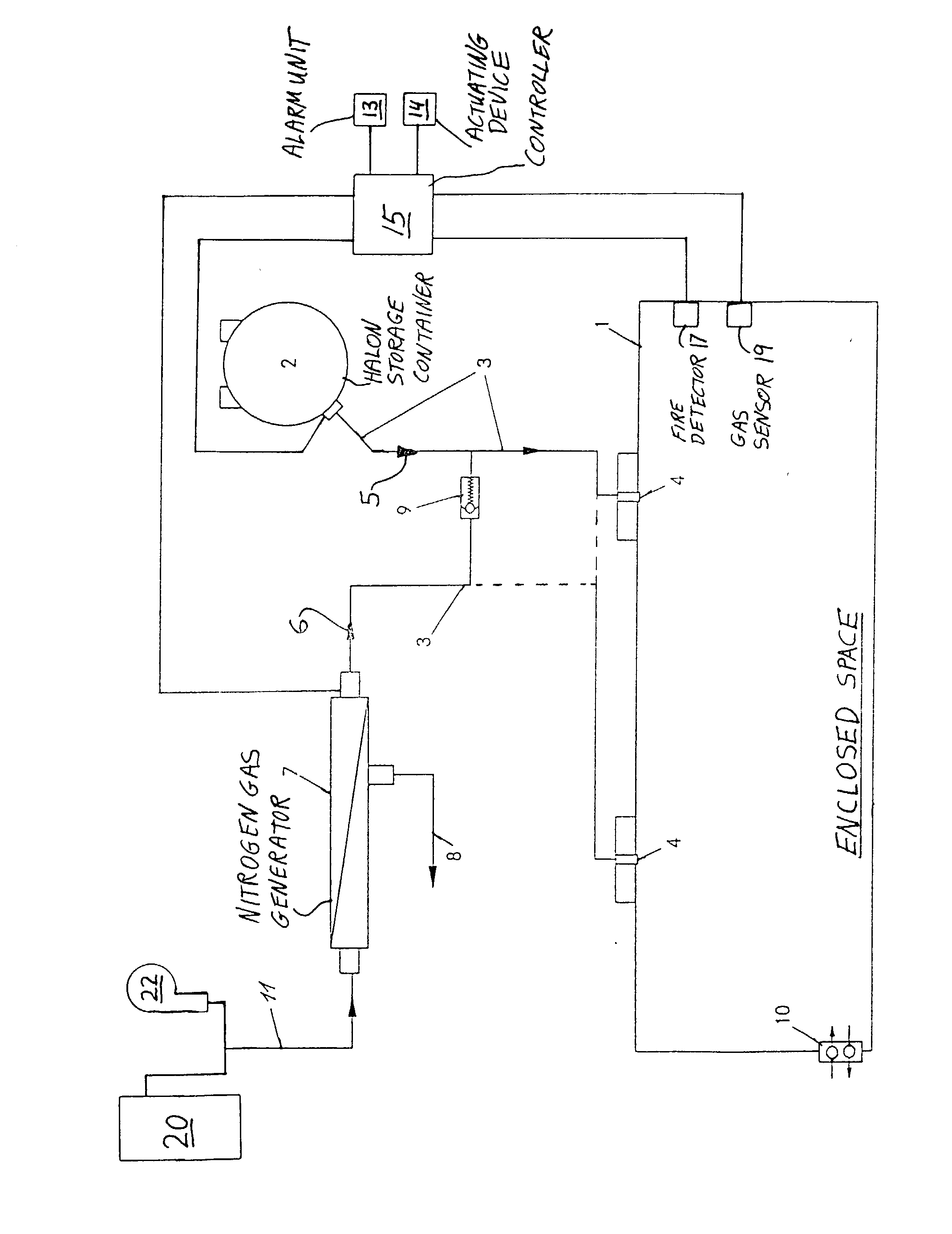System for extinguishing and suppressing fire in an enclosed space in an aircraft
a fire suppression and enclosed space technology, applied in emergency apparatus, transportation and packaging, dental surgery, etc., can solve the problems of affecting the safety of passengers, so as to avoid complex, time-consuming and costly cleaning efforts, the overall system mass is small, and the effect of avoiding complex and time-consuming cleaning efforts
- Summary
- Abstract
- Description
- Claims
- Application Information
AI Technical Summary
Benefits of technology
Problems solved by technology
Method used
Image
Examples
Embodiment Construction
[0020] As shown in the single drawing FIGURE, the inventive fire extinguishing and suppression system is provided for extinguishing and suppressing a fire that has broken out or erupted within an enclosed space 1, such as a passenger cabin or a freight or cargo hold of an aircraft. The presence of the fire is detected by a fire detector 17, which may comprise any conventionally known type of fire detector, such as a smoke sensor, a heat sensor, a gas sensor or the like. The fire detector 17 provides a corresponding signal to a controller 15, which in turn triggers an alarm signal in the event the existence of a fire is indicated by the fire detector signal. The alarm signal is audibly and / or visibly indicated by an alarm unit 13 such as a warning buzzer, bell or chime and a light or a visual display in the cockpit of the aircraft. Upon being warned of the existence of a fire by the alarm unit 13, the cockpit crew, or an automated controller such as a computer, can trigger an actuati...
PUM
 Login to View More
Login to View More Abstract
Description
Claims
Application Information
 Login to View More
Login to View More - R&D
- Intellectual Property
- Life Sciences
- Materials
- Tech Scout
- Unparalleled Data Quality
- Higher Quality Content
- 60% Fewer Hallucinations
Browse by: Latest US Patents, China's latest patents, Technical Efficacy Thesaurus, Application Domain, Technology Topic, Popular Technical Reports.
© 2025 PatSnap. All rights reserved.Legal|Privacy policy|Modern Slavery Act Transparency Statement|Sitemap|About US| Contact US: help@patsnap.com


